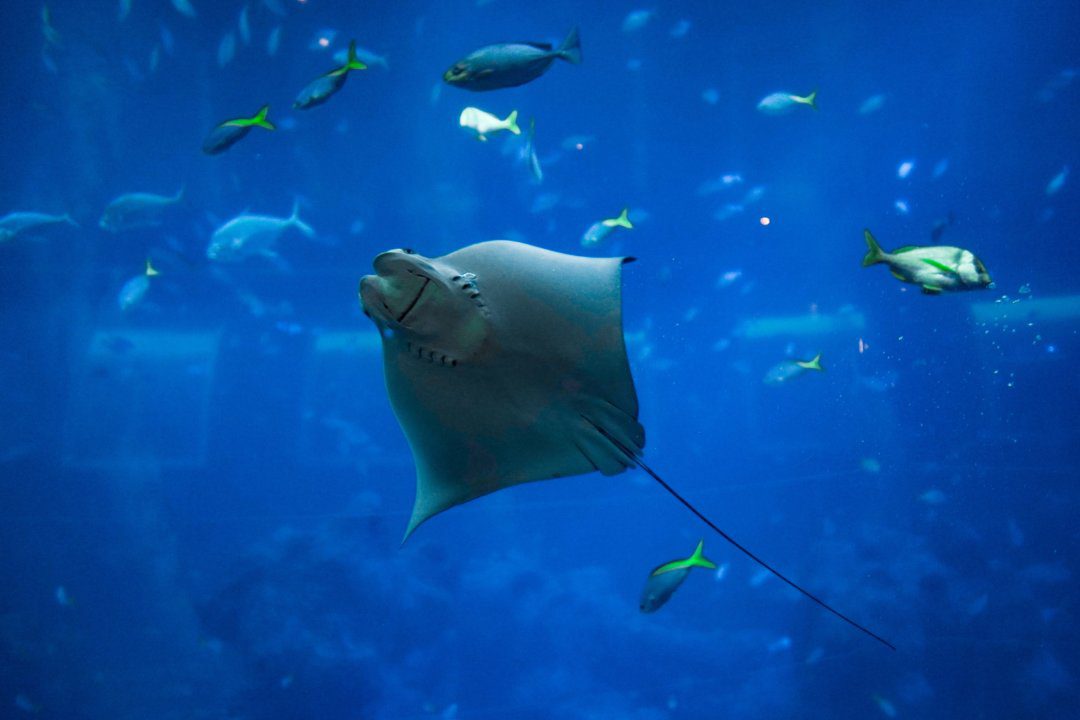An Introduction To Manta Rays
Manta rays are beautiful large rays found in warm climates and tropical water. They are classified among the Myliobatiformes and are known as being associated with the eagle ray family.
These fascinating rays tend to feed off zooplankton which they digest as they swim through the ocean. They are known for their large size, running from 5.5m-7m in width and have the largest brain and brain to body ratio of all fish.
Dive into the ocean and discover more about manta rays as we ask Constance Moofushi’s resident marine biologist, Erica Bonfanti all the questions about this exquisite species of fish.
Can You Spot Any Manta Rays At Constance Moofushi?
Constance Moofushi is the perfect location to encounter manta rays. We have multiple diving sites where you can spot them (Bojahamadi, Denagili, Panettone, Himandhoo Thila, Emas Thila, Bulhandilli). During manta season the diving centre organises once in a lifetime snorkelling trips to see them.
You have to keep your eyes peeled though, as they visit cleaning stations which are part of the reefs where the animals can get a “spa treatment” from smaller fish that eat parasites growing on their body.
In the Maldives, we experience two different monsoon seasons and these animals follow the plankton bloom associated with the upwelling (movement from the bottom to the surface of the ocean) of high nutrient water.
During the northeast monsoon (IRUVAI) that runs from December to March, the highest productivity can be found in the southwest part of the atoll. This is the best moment of the year to spot mantas around Moofushi, so if this is something you want to tick off your bucket list we would recommend visiting during this time of year.
Is There Any Activity Linked With Manta Rays When Staying At Constance Moofushi Maldives?
The marine biologist has a weekly talk about manta rays where she shares all the information related to these rays. So, make sure to not miss out on this educational activity and discover more about these beautiful angels of the sea.
What Are The Types Of Manta Rays That Surrounds Moofushi Atoll?
There are only two species of manta rays: the reef manta ray and the oceanic one. As the names suggest, the oceanic one lives in the ocean and the reef one lives closer to the reef.
The easiest way to tell them apart is by their dorsal markings. A reef manta has the ‘Y’ shaped shoulder stripe whereas the oceanic manta has a ‘T’ shaped shoulder stripe.
Oceanic manta rays are also bigger compared to reef ones. An interesting fact is that the Maldives has the biggest population in the world of reef manta rays. These are the most common to encounter around Moofushi, so look out.
How Long Do Manta Rays Live?
Mantas live for more than 40 years which is outstanding.
Although, sadly there are many threats menacing them. They are victims of bycatch, ghost nets and poaching and are mainly fished for their gill plate, meat and skin.
However, since 2013 they are under Appendix II of the CITES (Convention on International Trade in Endangered Species of Wild Fauna and Flora).
Constance Moofushi Involvement In The Protection Of Manta Rays
Constance Moofushi started a collaboration with MantaTrust recently, using their resources and their code of conduct on how to swim with mantas is one of the ways to raise awareness of these animals.
The team also submit all the encounters to contribute to their ID database. Different specimens can be identified by taking pictures of their belly.
Each manta has a unique pattern of spots on its ventral surface (belly), which remains largely unchanged throughout their lives.
Isn’t this fascinating?
What do you love most about manta rays? Is swimming with Manta Rays on your bucket-list?
Tell us in the comments below.
Or why not give our recent blog a read on unforgettable activities in Mauritius.
Feel free to reach out via our social channels and share your photos with the hashtag #MyConstanceMoment #TrueIndianOcean
Facebook: facebook.com/constancehotels
Instagram: Instagram.com/constancehotelsTwitter: twitter.com/constancehotels





No Comments